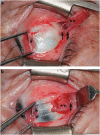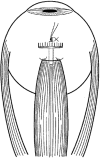Adjustable suture strabismus surgery
- PMID: 21760626
- PMCID: PMC3194320
- DOI: 10.1038/eye.2011.167
Adjustable suture strabismus surgery
Abstract
Surgical management of strabismus remains a challenge because surgical success rates, short-term and long-term, are not ideal. Adjustable suture strabismus surgery has been available for decades as a tool to potentially enhance the surgical outcomes. Intellectually, it seems logical that having a second chance to improve the outcome of a strabismus procedure should increase the overall success rate and reduce the reoperation rate. Yet, adjustable suture surgery has not gained universal acceptance, partly because Level 1 evidence of its advantages is lacking, and partly because the learning curve for accurate decision making during suture adjustment may span a decade or more. In this review we describe the indications, techniques, and published results of adjustable suture surgery. We will discuss the option of 'no adjustment' in cases with satisfactory alignment with emphasis on recent advances allowing for delayed adjustment. The use of adjustable sutures in special circumstances will also be reviewed. Consistently improved outcomes in the adjustable arm of nearly all retrospective studies support the advantage of the adjustable option, and strabismus surgeons are advised to become facile in the application of this approach.
Figures







Comment in
-
Paediatric adjustable strabismus surgery.Eye (Lond). 2012 Jul;26(7):1024-5; author reply 1025-6. doi: 10.1038/eye.2012.64. Epub 2012 Apr 13. Eye (Lond). 2012. PMID: 22498799 Free PMC article. No abstract available.
References
-
- Bielschowsky A.Die neueren Anschauungen über Wesen und Behandlung des Schielens Med Klin 1907iii335–336.translation by Catharina Latz, MD.
-
- Jampolsky A. Strabismus reoperation techniques. Trans Sect Ophthalmol Am Acad Ophthalmol Otolaryngol. 1975;79:704–717. - PubMed
-
- Jampolsky A. Current techniques of adjustable strabismus surgery. Am J Ophthalmol. 1979;88:406–418. - PubMed
-
- Rosenbaum AL, Metz HS, Carlson M, Jampolsky AJ. Adjustable rectus muscle recession surgery: a followup study. Arch Ophthalmol. 1977;95:817–820. - PubMed
-
- Keech RV, Scott WE, Christensen LE. Adjustable suture strabismus surgery. J Pediatr Ophthalmol Strabismus. 1987;24:97–102. - PubMed
Publication types
MeSH terms
LinkOut - more resources
Full Text Sources
Other Literature Sources
Medical

